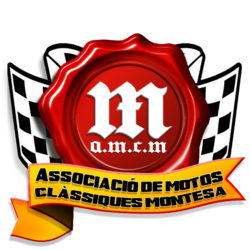History of Montesa
Montesa Was founded the 1944 in Barcelona for Pere Permanyer and Francesc Xavier (Paco) Bultó, although it was not until the February 3, 1947 when constituted the definite society, with good reason social Permanyer, S.A. of Industrias Mecánicas (quite a lot years later, around the middle of decade of 1970, the society changed the social reason for (Motocicletas Montesa, S.A.). The family Permanyer contributed 76,3% of the capital and the family Bultó, 23,7%. Permanyer Had business experience to the bouquet of the automotion with gasogen, and once this sector began to slacken decided to test luck in the production of motorcycles with engine of two times of benzine, a new emergent market in those years. His first prototype based in the models of the French brand Motobécane.
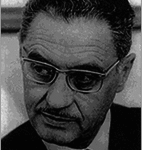
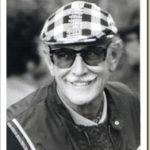

In those years of autarchy cost a lot to achieve material and components of quality, since to the isolated Spain of then no produced and it was necessary to matter them. Attended that, to do it, needed divises and the only way to achieve was by means of the export, Montesa found the solution to this problem all devoting to export oranges that, previously, bought in big quantities to llauradors Valencian. It has said that, thanks to this system, the company goes can matter a good quantity of boxes of change and pertinent gears of the United Kingdom.
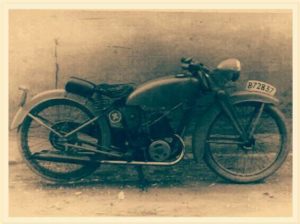
The crisis of the years 50
The 1950, the commercial success of the second model of the brand, the B-46/49, forced the company to move to a new factory of 1.500 m² to the street Pamplona, in Barcelona. As a successor of this model, Bultó designed a new motorbike of road of 125cc that was tested in many races of speed and resistance and that, adapted to an use utilitari, commercialised the 1951 with the name of D-51. This model reached to take part the 1951 to the Six International Days of Enduro, driven by the same Bultó and Guillem Cavestany. The version of competition, known as a Montesa Sprint, had a box of changes of six speeds and chassis semi-monocasc, and during the decade of 1950 took part many in races of speed to the category of 125cc. The year 1956 was the apogeu of the Sprint, finishing in the places second, third and quarter of his category in the race of the Tourist Trophy of the island of Man.
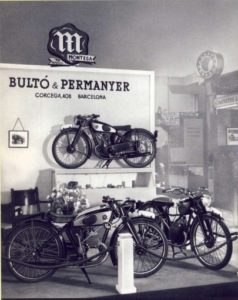

The Montesa of more commercial success to the years 50 was the Brío 80, of which produced more than 12.000 copies. The models Brío 80 and Brío 90 incorporated many technological advances, such as the carburettor behind the cylinder and a brake of hand. The success of the Brío and of the other models did that Montesa posed to open a new centre of production bigger and modern.In spite of this, a fall in the Spanish economy forced Permanyer to retallar the sportive activities of the company. Permanyer Wanted to withdraw of the races of speed, but Bultó insisted that it was necessary to continue. Finally, the May of 1958, Bultó left the company enduent- an essential part of the technical personnel and founded Bultaco. Permanyer Lost no only a brilliant designer, but also his participation in 30% of the company. Fortunately for both, the Spanish economy began to improve.
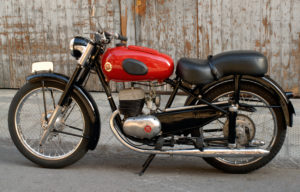
Growth and success to the years 60 and 70
To face the exit of Bultó, Permanyer renewed the managerial team of Montesa promoting to Engineer in any of Development to Pere Pine, pilot of tests of the brand and polifacètic champion motociclista (years to come, would be father of the champion of the world of biketrial Ot Pine). The new Technical Director was Leopold Milan and Xavier Permanyer (son of in Pere) would be the Assistant of Sports. Immediately they began to work in the design of a new line of engines of 175cc that the 1962 instrumented the new model of road, the Impala. This engine would be the base of the future motorbikes of trial and motocròs of the company. In order to promocionar this model mounted an expedition, called Operation Impala, in which three prototypes of the future Impala did 20.000 kilometres in the Africa, the greater part for out of asphalt.
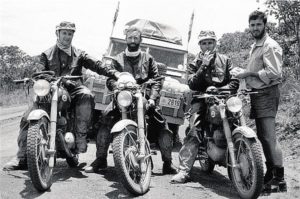
To the same time, in Catalonia, Pere Pine wins the Spanish championship of motocròs and puts to work in a new version of 250cc. At any one time, Permanyer decides to move the factory to Esplugues of Llobregat, to the Bass Llobregat (where would be until the 2000), since the venue that occupied the company, to the street Pamplona of the Poblenou, had remained them small. The new factory of Esplugues, designed by the prestigious architects Alfons Milà and Federico Correa, did more than 10.000 m² (some sources encipher them in 14.000). To his hovering built buildings for big part of his 460 workers.
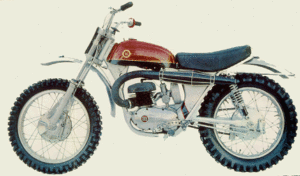
After his presentation the 1965, the new engine of 250cc would be the angular stone of the future success of the company. Driving the new motorcycle instrumented with this engine (commercialised in the USA with Cross’s name 66), Pine won the Spanish championship of motocròs the 1966, whereas the Sport of road, instrumented with a similar engine, won the 24 hours of Montjuïc of resistance in Barcelona the same year. The 1967appear the first models of trial of Montesa and the 1968, shortly before the launch of the Height, Pine won the championship of trial Spaniard with a Trial 250. After adding this title to the six of motocròs and to the of speed that already had, Pere Pi withdrew of the competition in order to devote all his energy to the development of motorcycles.
Montesa In aviation
In the field of the aviation, it is necessary to highlight the setting of engines, half the time of cross (models Cappra), in ultralleugers or ULM (Ultra Light Machine), especially the ones of greater potència. Also one can mencionar the engine built by Aviación General S.A. with cylinders of Montesa: Helios/Montesa 2501 of 1979.
Launch of the trialsín
Montesa took part actively in the launch and consolidation of the trialsín, a sport that at present knows as a biketrial and that it was contrived and popularised by Pere Pine from 1978. The company commercialised what was the first bicycle of trial produced in series, the Montesita.
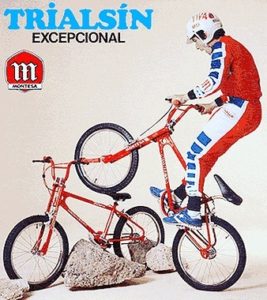
The strikes of 1978
The 1978 the company saw affected by a big strike that lasted almost three months and left it economically very touched. The strike of Montesa was historical regarding the Bass Llobregat, jointly with the ones of Corberó and Braun. The vaguistes lived to the door to begin with of the factory, to touch of the got along Electrical Line of Cornellà of Llobregat, and did not leave access anybody.
Association with Honda
The 1981, a new economic crisis complicated enormously the sector of the manufacturers of Catalan motorcycles. The strikes and a market in shrinking caused the closing of historical Catalan companies such as Bultaco, OSSA and Mototrans (Catalan manufacturer of the Ducati). Other brands how Puch Avelló and Sanglas would be absorbed by Suzuki and Yamaha, respectively. Montesa Resisted but remained gravely touched, with urgent need of capital. The month of September of 1983 the company presented suspension of payments, but a loan of the Spanish government and the sale of actions to Honda (company that wanted to establish an industrial base in Europe that produced specific motorbikes for his important market) helped it to throw forward. In fact, one of the conditions of the Spanish government was that Honda guaranteeed that the production would not stop .
The agreement of Permanyer with Honda that originated the new society (Montesa-Honda, HEALTHY), materialised the 1982, allowed to Montesa follow commercialising the Height, now with the name of “MH”, and Honda goes can like this accumulate stock of motorbikes of trial to sell them underneath of his cost of production (dumping) in an effort to achieve a dominant position in the European market and to evade the restrictius tariffs of import.
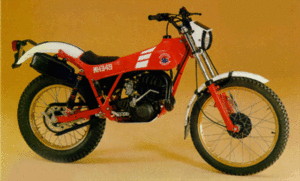
The July of 1985 carried out an important reorganisation to the factory of Esplugues, and Honda reinvested a lot of capital. In those moments produced only two models of trial, and the strength of work had reduced as soon as to 152 employees. A year later, there was more financial movements between Honda, the government of Spain and the family Permanyer, to who Honda bought the majority of the actions that preserved. Since the u of July of 1986 Honda has a 85% of participation. Also in that moment, Honda invested other 5 million dollars in the modification and update of the factory. The year 2000, the factory moved to the new installations of Saint Perpetual of Mogoda.
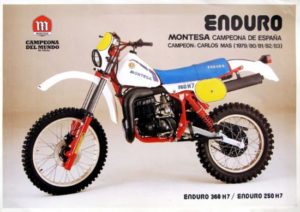
Actuality
Montesa is a brand in permanent actuality. Apart from the sportive successes that follows obtaining in trial, for the best that now already as a Montesa Honda, the spirit of the Montesa classical follows lives in annual events that apleguen numerous followers of the brand. On the other hand, the December of 2014 inaugurated a permanent exhibition to the Museum of the Science and of the Technical of Catalonia (mNACTEC) of Terrassa, Alive “renown Montesa“, where exhibit tens of copies of historical models of Montesa, provinents all of the Collection Pere Permanyer.

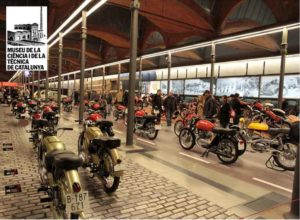
The factories of Montesa
Along his history, Montesa occupied three plants of different production, in two towns (Barcelona and Esplugues of Llobregat):
– 1945 – 1950: Barcelona, to the street Còrsega, núm. 408 (corner with the street Sicília)
– 1950 – 1962: Barcelona, to the street Pamplona, núm. 89 (corner with the street Pallars)
– 1962 – 2000: Esplugues of Llobregat, to Paloma’s street, núm. 21-53 (to touch of the got along Electrical Line of Cornellà)

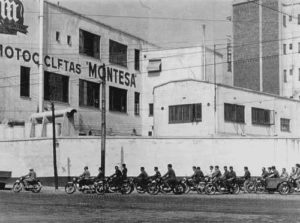
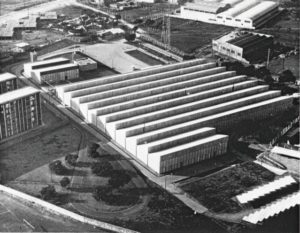
The factory of Esplugues
The September of 1961 initiated the building of the new factory of Esplugues of Llobregat, which initiates his activity the 1962 and inaugurated officially the April 19, 1963. The factory occupied a big extension. To the beautiful half of the playground of main access heaved Josep’s sculpture Maria Subirachs (Prototypes Montesa 1947-1970, of 1971).

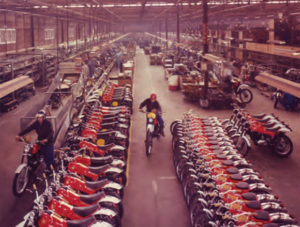
Demolished The 2002, the zone where assentava the factory knows at present to Esplugues as a the “Neighbourhood of Montesa”.
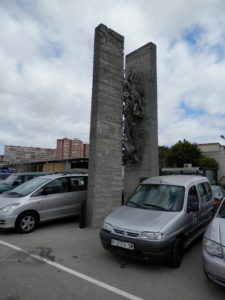
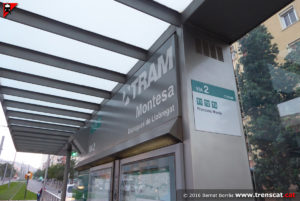
Structure of the company (of the years 60 to the 80)
Managerial Team
Between the years 60 and 80, the managerial team of Montesa formed it the heads of the most important departments, they all shareholders and people of the maximum confidence of Pere Permanyer. It called them managerial “of full dedication” and were these:
| Name | Position |
|---|---|
| Joan Cañellas | General Director |
| Josep Soplón | Manager |
| Francesc Calaff | Commercial Director |
| Salvador Cervera | Technical Director |
| Antoni Giralt | Factory Director |
| Xavier Permanyer | Director of the Factory and Sports Director |
| Modest Solé | Export Director |
| Pere Permanyer | Head of Sales |
| Artemio Palacín | Chief of Staff |
| Pere Pi | Head of the Department of Research and Development (DID) |
| Jordi Ros | Chief Technician of the DID |
| Oriol Guixà | Head of R & D (last years) |
| Pere Castellví | Head of the Bank of Tests |
| Antoni Soplón | Head of the Auxiliary Workshop (TAX) |
To 1965, Pere Permanyer created a specific department for the motorbikes of out of asphalt, sector that began to take importance enfront of the prioritari until then (the road and the speed). Ahead of the new department situated Pere Pine, and this chose as a members of his initial team to Jordi Blond (projectista technical), Joan Céspedes and Otón Tena (mechanical) and Jordi Llaveria (planxista). At the beginning ubicaren in a space of some 50 m² to the same ship of production, in the zone of special spares. In that incipient department, Pi and his team manufactured the first motorbike specifically of motocròs produced in series for Montesa, the Cappra 250 of 1967.

Over time, the activity of this department increased and needed more space, so that I built him a new specific ship of some 200 m², to the outside of the one of production (in, but, of the recinte of Montesa). With the years, the ship went engrandint until arriving to the 500 m². From then, the department led by Pi called officially Department of Research and Development (DID). It counted already with bank of tests, auxiliary workshop (TAX), room of design, own organisation, etc. The DID collaborated with the technical office of factory and with the Department of Purchases. It was then when Montesa took the decision to produce seriously motorcycles of motocròs in important quantities, initiating the change of course of the brand to this sector. Simultaneously, Leopoldo Milà drove another department differentiated (in the factory), to project the motorcycles of road from the evolution of the Impala and derivative models (such as the Texas of 1966). For this task, Milà counted with the aid of Piti Millet.
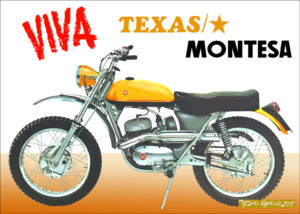
To the DID reached work, between technical, mechanical and organisation, some 40 people. Go in the most successful models that created, it is necessary to highlight all the series of the Cappra (125, 250 and 360), the Height (since the 247 until the 349, in addition to the innovative 74 and 123), or the Enduro (250, 360 and 75/80). Altogether, Montesa manufactured some 11.000 motorbikes of motocròs and some 23.000 of trial that sold to the state market and to the of export, with big success. As a curiosity, Permanyer had awarded to Pere Pi a special premium of 100 pts (0,60 €) for motorbike of trial and motocròs sold, with which thing, immediately of the suspension of payments (1983), the company owed him more than 2.000.000 of pts (12.000 €, important quantity then), in concept of 20.000 motorbikes sold.
Process of design
To the DID designed and mechanised everything: engines and chassis. It had of a department of bank of tests to test and improve the engines and an auxiliary workshop (TAX) to conceive the pieces artesanalment. The designs of the deposits, protective plates, parafangs, etc. It realised them Pere Pi with plastilina, directly on the motorbike required: it created a support of sheet and all followed placed it to him plastilina yellow or green to give him the shape that had foreseen. With the aportacions of the other members of the DID, finished to define the shape and colour. The same happened with the names of the models created: Pere Pi contrived them and, after proposing a few to his team, between all finished him to decide.

Jordi Ros Technician of design, elaborated between of others the complete engine of the famous Height 74 and 123, a revolutionary engine with six speeds that contrived splitting from scratch. For Montesa meant an increase of important sales, since the Height 74 could drive from the 16 years.
Production
Montesa began manufacturing successful motorbikes of road and races of speed, but highlighted since the years 60 in the manufacture and in the competitions of motorbikes of out of asphalt, mainly trial, motocròs and enduro.
The Impala
The Impala was one of the most successful projects of the company. Designed by Leopoldo Milà splitting from scratch, the result was one of model quite a lot differentiated estèticament of the previous of the brand. Since the moment of his commercialisation, the new model became a success of sales and only the first year already sold more than 11.000 units. It was a very versatile motorbike, that adapted perfectly to all ore of modalitats sportive, such as the speed, the resistance, the rallies and the motocròs (the Impala Cross, version created for this modalitat, was the base of the future model of the brand in this speciality, the Cappra). To the head of few years, of the Impala derived also the Height.


The Cappra
Another model for which the brand has happened to the history is the Cappra of motocròs. Since his launch until the abandonment of his manufacture for part of Honda, the Cappra won numerous championships all over of the world, as well as races of the European and world-wide championships, in spite of have not won never these two championships.
The Montesa Cappra was produced in the cylinders of:
125
250 (it was the one that got the most international reputation)
360 (for the 500cc championships)
414 (evolution of the previous 360 launched in the 80s)
A version that marked the evolution of the model was the one of 1973, the Cappra VR (“Vehkonen Reply”, copy of the one of the pilot finès Kalevi Vehkonen) that incorporated big improvements and was a success of sales all over of the world. Since then, the Cappra went calling Cappra GOES, VB, COMES … until the last version, the VG of 1981.

The Cappra manufactured in different colours without differences for cilindrada, until reaching the VR that went out in a characteristic red that substituted the blue sky platejat of previous years. Soon they incorporated to the deposit ones fringe yellow and lateral blacks, valid until the model COMES of 1979 changed totally of image adopting a greenish yellow colour, changed to white the 1981.

The Cota
The most famous model of the brand is definitely the Cota of trial, of which the company reached sell 80.000 units. Already since his launch surprised for his reliability, potència and beauty. To the years 60 the Height 247 won prizes of design and became an icon of the period. Along his history, and until the fusion with Honda, the Height has reached produce under many denominations, corresponding cadascuna to a cilindrada:
| Historic models of the Cota | Observations | ||||
|---|---|---|---|---|---|
| Cota 25 | Cota 49 | Cota 74 | For the public from 5 to 17 years old | ||
| Cota 123 | Cota 172 | Cota 200 | For lovers of rolling stock, But highly competitive |
||
| Cota 247 | Cota 348 | Cota 349 | For the highest level trial | ||
did also the version “T” (of “trail”) and for example the Cota 247-T. A model that caused feeling was the Cota 247 VUK (Version Ulf Karlson, reply of what brought this Swedish pilot) of 1975, that by the year following gave not to the innovative Cota 348. Since good beginning, the Cota manufactured invariably of red colour, until the 1980 that happened to be white.
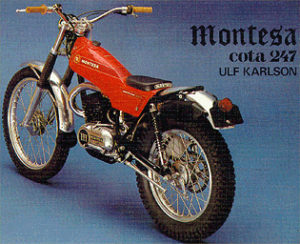
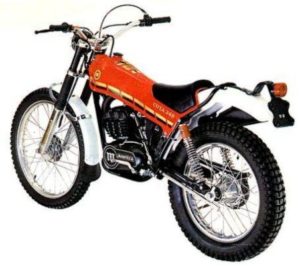
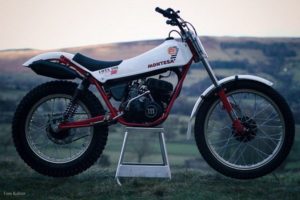
Already with the entry of Honda, Montesa followed leading the world-wide championships of trial until well gone in the years 90, although the range of models limited to one of only. Ente 1992 and 1993 produced what would be the last model 100% Montesa, the Cota 311 with liquid refrigeration. The 1994 presented a new model, the 314R, already with engine Honda HRC and with many other components of Honda. This motorbike won the championship of the world of trial the 1996 and the 1997 went out the 315R, model that has had a series of 7 world-wide championships followed. The 2005 was replaced by the Cota 4RT, instrumented with a revolutionary engine of four times.
Other models
Apart from the already mentioned, in the apartat of road it is necessary to remember the models:
- Brío 80 i Brío 90 als 50
- Brío 110 als 60
- Crono a finals dels 70 i beginnings of the 80
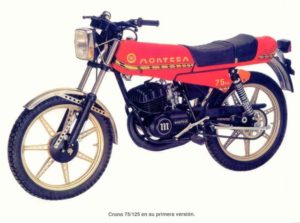
Montesa Crono 75
In the apartat of the enduro highlighted:
- Scorpion 50 for the children’s audience
- King Scorpion originally intended for the US market
- Enduro, which was basically the “civilized” Cappra, in order to be able to enroll and participate in specialty races
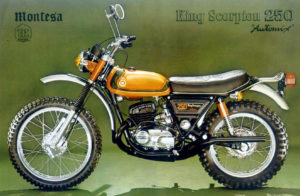
Montesa King Scorpion 250 Automix The company produced also during the decades of 1960 and 1970 mopeds (such as the Ciclo Montesa or the Mini Montesa), escúters (Microscooter) and minimotos (Mini-Mini).
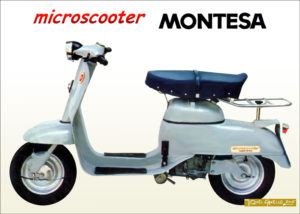
Montesa Microscooter (Motor Laverda)
Montesa To the sector of the car
Microcars
The engines manufactured by Montesa have had several applications along the years. Like this, for example, to 1950 the Barcelonan manufacturer Kapi mounted engines of 125 cc of this brand to his first models of microcotxe. Between 1952 and 1953, to Montesa designed a prototype of microcotxe instrumented with the engine of the Brio 90 of 125 cc, called BCB and projected between of others for Paco Bultó. In spite of that the project no reeixí, the authors had as a aim the creation of a company that would commercialise these microcotxes (Montesa would contribute 25% of the capital, would supply the engines and would commission of the sale through his network of distributors).
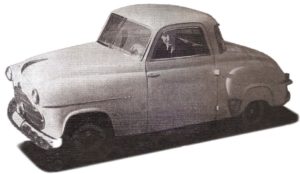
Another project equiparable was the tricycle with bodywork biplaça and mechanical Montesa that built Vicenç Badia, pilot of Barcelonan motorcycling, the year 1961.
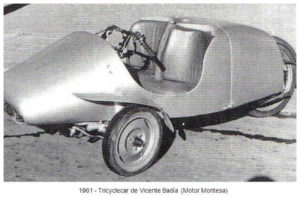
Between 1982 and 1985, the manufacturer of microcotxes French Microcar commercialised his models RJ 125 and DX 125 with engines Montesa of 125 cc. These engines developed 10 cv of potència to 6.500 rpm and allowed to the microcotxes to attain a maximum speed of 75 km/h.
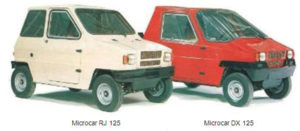
Cars of competition
The engines Montesa instrumented also karts, small cars of competition and cars of Formula IV during some years. These engines incorporated in xassissos of constructors as diverse such as Selex, Hispakart, Tapias, Artés-Guepardo, etc. Also several cars of European competition opted for mechanical Montesa: the 1970, Tony Brise won the championship of England of Formula IV with a bòlid instrumented with engine of this brand of 250 cc (Brise was son of the agent of Montesa in the United Kingdom, the landlord of Montala Engines).
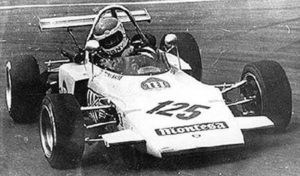
Electrical vehicles
Montesa studied even a project to manufacture or distribute under licence a French electrical vehicle, the Voiture Electronique of the brothers Jarret, that was presented to the Fair of Barcelona during the decade of 1970. The idea was, but, desestimada.
Competition
For the best that Montesa initiated in competition in the specialities of road such as speed and resistance, is in the ones of out of asphalt such as trial, motocròs and enduro where attained more international fame.
Speed
Before his dedication prioritària to the out of asphalt, Montesa had a long activity in the apartat of the speed. With his motorcycles competed the best specialists of the decades of 1940, 1950 and 1960, such as Paco González, Josep Maria Llobet “Turuta”, Juan Elizalde, Salvador Cañellas, Josep Maria Busquets, César Gracia or Walter Villa.


The Famous “Xuclat” motor in the 24 Hours of Montjuïc
It is called “Xuclat” because it is a motor of reduced crankcases with respect to the typical Montesa of big casings like the Impala.
It was designed by Jordi Ros and father in turn of the small crankcase engine of Montesa (The 75 and 125 of 6 gears that later in the Quotas were inflated much more).
Originally it was mounted in Cross, with Verkhonen, but some one got to mount in speed or resistance. A later version of this engine is the Montesa Cappra and Water Enduro of small crankcases (the Crono of resistance is from large crankcases).
The need for new tools for machining and lack of money did not allow it to be taken to the series.

To finals of the decade of 1970, Montesa launched a formula of promotion of his model of road for young (the Crono), called Trophy Montesa Crono. The competition featured of several races and it was necessary to take part with one of these motorcycles, with modifications to the engine if it wanted . This Trophy summoned only the 1979 and served to announce young values that few years next triumphed to the world-wide of speed, between which Carles Cardús.
Trial
The 250 Trial, piloted by Pere Pi the 1968
Pere Ollé with the Height 349 the 1981
In the field of the trial Montesa has been dominating the speciality since 1969 (apparition of the Height) until the actuality, winning numerous titles all over of the world, including European championships and world-wide, as well as victories to the Six days of Scotland. At the beginning and until the 80 shared leadership role with the also Catalan Bultaco (that had been pioneering with the Sherpa T) and OSSA (with the MAR).
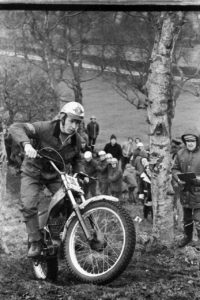
They highlighted as a pilots of the historical Montesa Height:
| Pilot trial featuring Montesa | ||||||
|---|---|---|---|---|---|---|
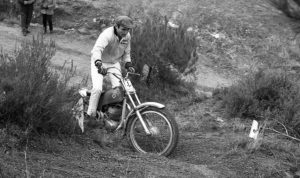

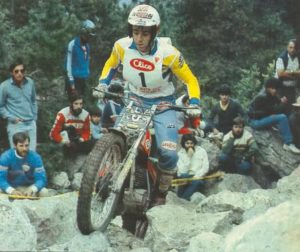
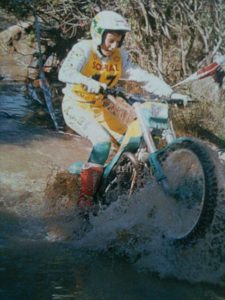
According to official sources, until February 2015, Montesa had obtained a total of 54 world-wide trial titles: 15 outdoor trial, 14 indoor, 8 female and 17 outdoor builders. This is the breakdown:
As of September 4, 2016
The trial world championships obtained by Montesa are the following:
| Year | Champion |
|---|---|
| 1969 | |
| 1980 | |
| 1996 | |
| 2000 | |
| 2001 | |
| 2002 | |
| 2003 | |
| 2007 | |
| 2008 | |
| 2009 | |
| 2010 | |
| 2011 | |
| 2012 | |
| 2013 | |
| 2014 | |
| 2015 | |
| 2016 | |
| Total | 17 |
Notes
Until 1974 included the Championship was from Europe, and from 1975 it became known as the World Championship.
Other sources include the Fujinami World Cup (2004) as won by Montesa, but in fact that year the team officially competed for the Honda brand
The indoor trial world championships obtained by Montesa are the following:
|
|
||||||||||||||||||||||||||||||||||||||||||||||||||||||||
Motocross
Joan Font with the Cappra 360 in 1969
Also on motocross, with the Cappra Montesa he won many competitions and titles around the world, despite never having achieved the world championship of the specialty.
In addition, as well as in speed, the 1976 Montesa launched a promotional trophy of its motocross model, the Cappra 125, designed to discover young promises of the discipline. The competition, called the Montesa Trophy, consisted of several scoring races and was repeated annually until 1981. During those years, the Trofe passed young values that soon succeeded in state competitions, such as Jordi Monjonell, Toni Arcarons, Ramon Ramon, Juan José Barragán, Jordi Arcarons and Agustí Vall.
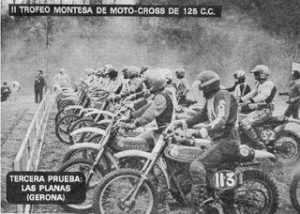

Outstanding pilots of the Cappra were:
Motocross drivers highlighted by Montesa

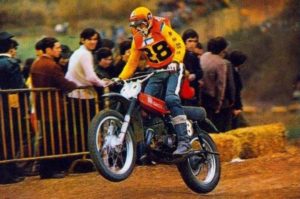

Enduro
Regarding the enduro, Montesa excelled in the 125, 250 and 350 cc cylinders, highlighting the 70 with the Enduro 360, Joan Bellsolà, Josep Maria Sucarrats, Josep Maria (Bubú) Casanovas, Carles Mas, Ferran Gil, etc. The Enduro model was manufactured between 1974 and 1984, in several versions, and was derived from the motocross Cappra, from which the chassis, the telescopic fork and the shock absorbers were placed in the rear at 45 degrees.
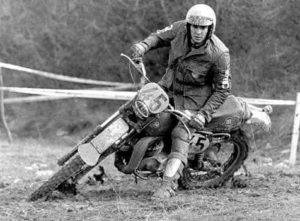
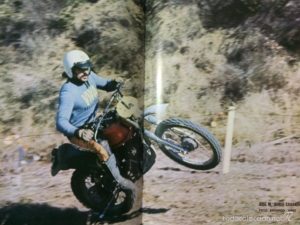
Source: Viquipedia
Photos: web site

